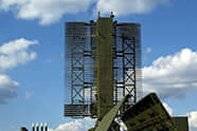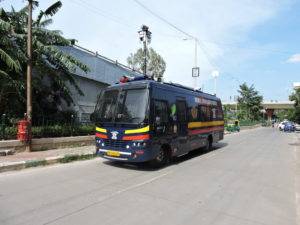Introduction
Emergency response systems play an important role in homeland security nowadays in the wake of security threats and natural calamities. The key concerns include coordination between different teams handling the crisis along with finding and dissemination of appropriate information. Any emergency response involves many people, rescue teams on the field, decision-makers at different levels of government and citizens. Their tasks, and therefore their data needs, vary drastically from making crucial decisions to just following the development of the situation. Good collaboration and understanding is needed at each level, and it is critical for units and institutions involved directly in managing the emergency to be in sync.Information plays an important role in every stage of disaster management and response. Small scale, 2D geo-information (maps or satellite images) is grossly insufficient. There is a need for more detailed information about a building or underground construction which will include; distribution of rooms, type of construction, materials used, utilities, facilities (stairs, emergency exits, evacuation possibilities for disabled, etc.). Such data must be found, analyzed and processed, and supplied to the right person at the right moment and in the most appropriate form.The distributed management of the information, the variety of systems, formats, representations and data structures, make this task extremely challenging. Today, numerous organizations design, store and manage information about buildings, topography, utilities, etc. These organizations operate independently and hardly any of them work within a multi-disciplinary environment, which means they may not have been required to develop inter-operable systems.
Designed for different purposes, most existing emergency response systems lack a robust communication module, analysis functionality, data management (including dynamic field data), or data discovery mechanisms.
Architecture and Implementation
An effective design of an emergency response system involves multi-disciplinary design considerations. This includes:
Effective use of various information sources (text, imagery, 2D and 3D graphics, video) for monitoring and decision making
The ability to provide updated information to rescue units, decision makers and citizens fast, almost real-time, communication to transfer on-site information
Rapid, intelligent determination of evacuation routes considering dynamic factors such as current availability of exits, stairs, etc. and the characteristics of the evacuees (age, gender, disability)
Data integration for analysis and prediction of different complexity
The ability to alert communities at risk and provide information to press and the general public, as well as maintain statistics about victims and damage
Data presentation on handheld and desktop, wired and wireless, equipment, simultaneously
Alternatives for multi-disaster, multi-team work circumstances.
Making such a system is clearly not a trivial job. It would require not only technical developments, but also many national, political, legal and organizational agreements. Theoretically, three types of system architecture can be considered: centralized (all data organized within the emergency center), federated (distributed maintenance of data but under a common schema) and dynamic collaboration (maintaining the data at their location and their original representation).Bearing in mind the nature of emergency response, dynamic collaboration seems the most appropriate approach. The system consists of three levels: users, middleware and data on distributed servers. Some geospatial data (such a topographic map, or satellite images) might be still maintained centrally, but most of the data will be distributed. Users are grouped based on the type of equipment they would use to access information: mobile and desktop users. All users access the system via a given profile used to specify privileges, search for appropriate information and adapt the delivered outputs.
The major components of this set up are ‘positioning and communication middleware’ (responsible for the contact with the users) and ‘data middleware’ (responsible for information delivery). The data middleware is the most critical component. It would need to accept and understand requests from users, find the most appropriate, analyze them and/or perform needed processing algorithms (such as calculate evacuation routes), and prepare the data for the user based on his or her needs.
Mistral-Amper Solution
nemesis EMS (Emergency Management System) is a Crisis Management Solutions developed by Amper and available in India from Mistral. Based on a net-centric architecture, it provide tools for crisis management and inter-connect all the agencies involved. The aim is to exchange information among systems. Each of the systems add their bit in creating the Common Operational Picture. nemesisEMS provides situational awareness of what is happening in real-time.
NemesisEMS uses a distributed architecture that uses data synchronization and publish & subscription mechanisms to access services. The network itself is responsible to locate and to deliver the user the services subscribed by them.
The nemesisEMS solution includes an array of communications that integrate most of the communication systems.
Based on IP technology, nemesisEMS is ready for new standards NG911 (Next Generation 911). On a three screen interface: dispatch, mapping and communications interface, nemesis EMS implements the most advanced features of the emergency management centers e911/112.
Communications, mapping and dispatch are fully integrated. Incidents are automatically placed on mapping, where in addition resources are represented. From the cartography user can initiate/respond calls by double-clicking the icons.



